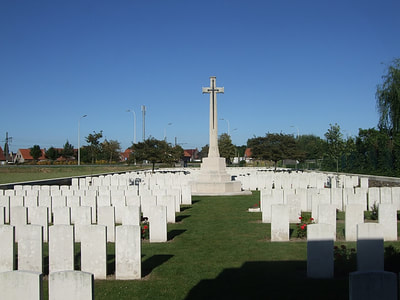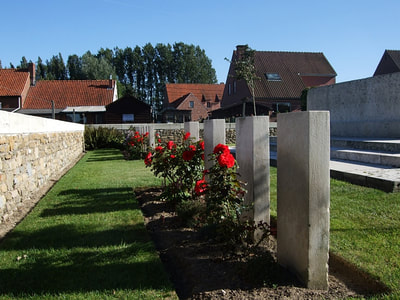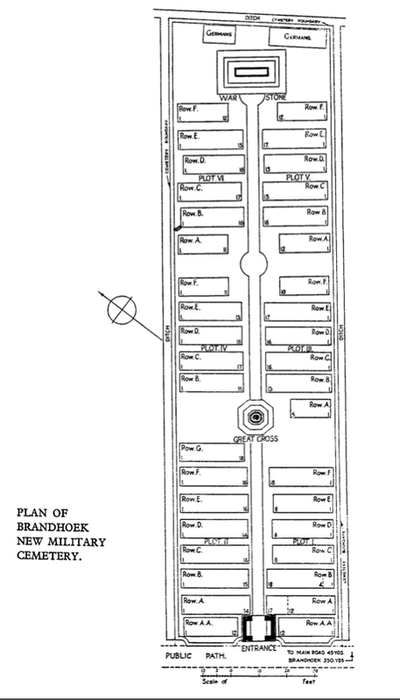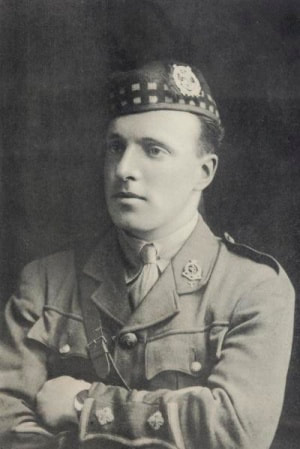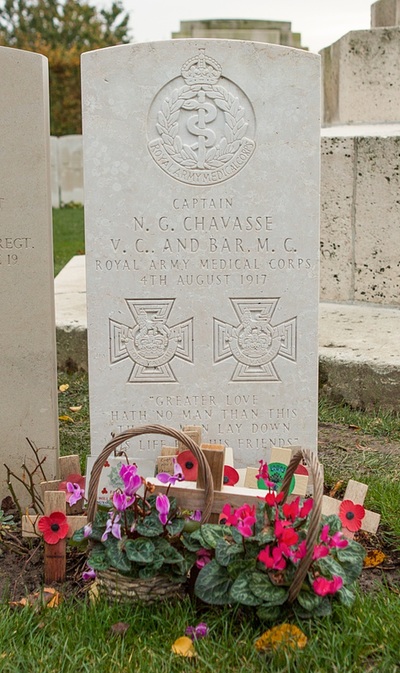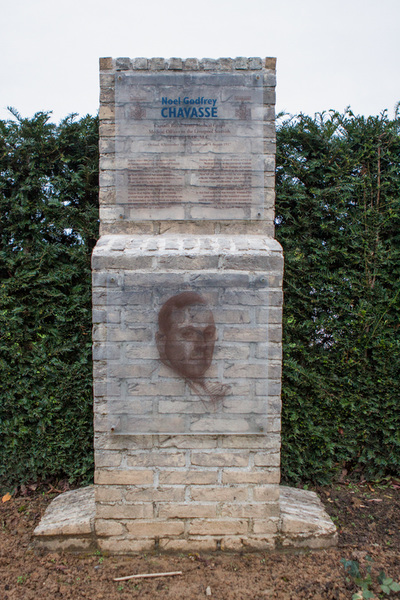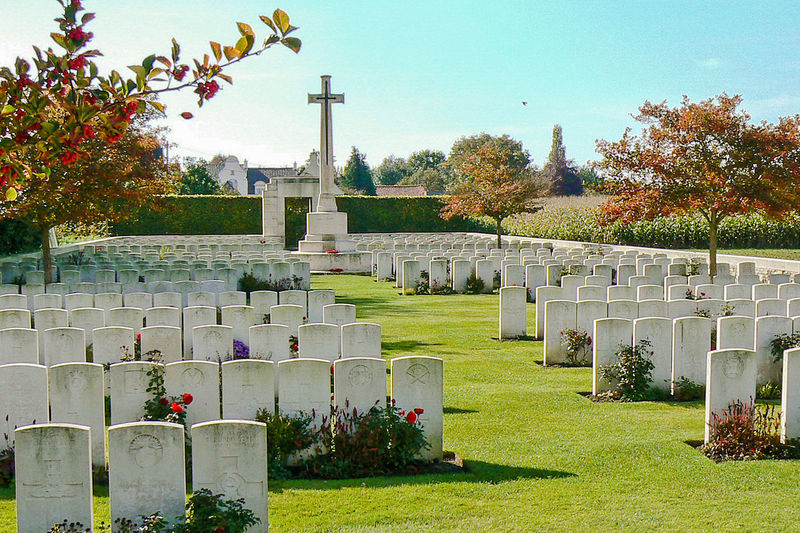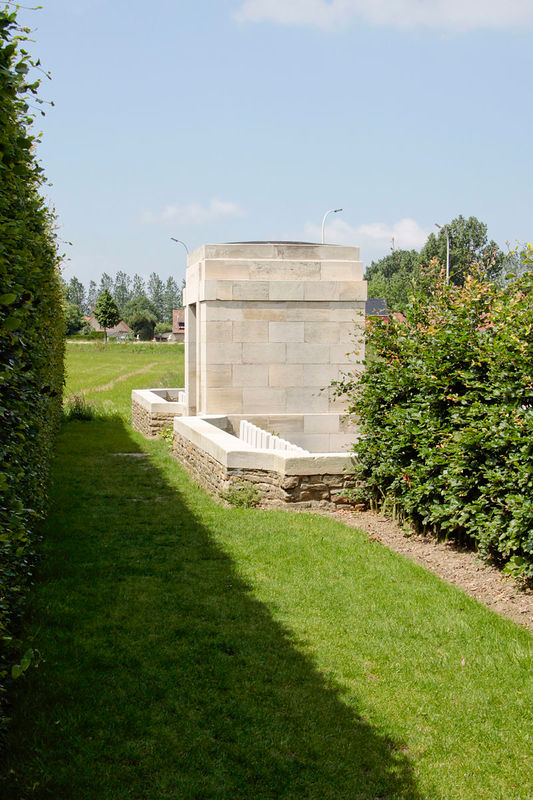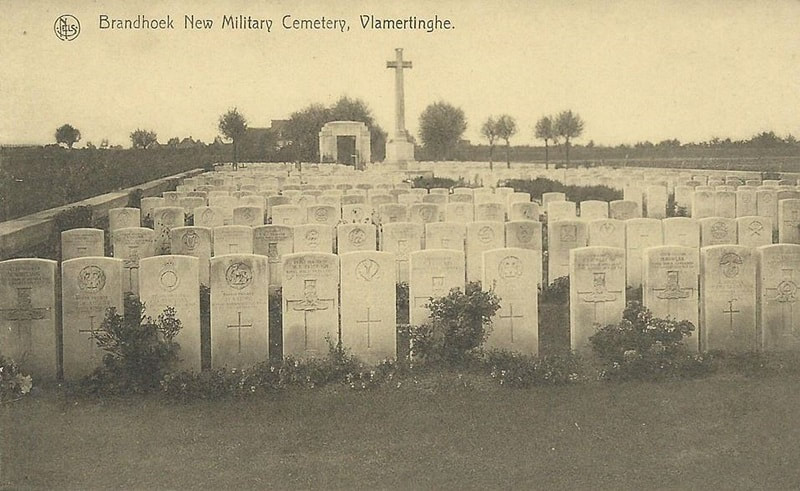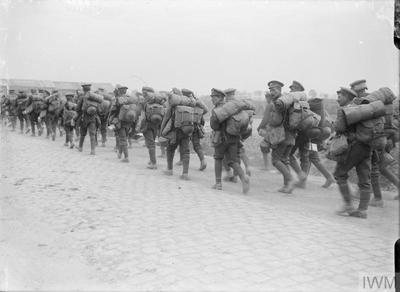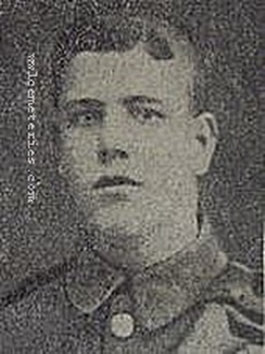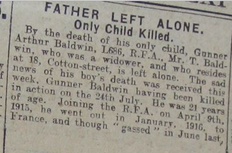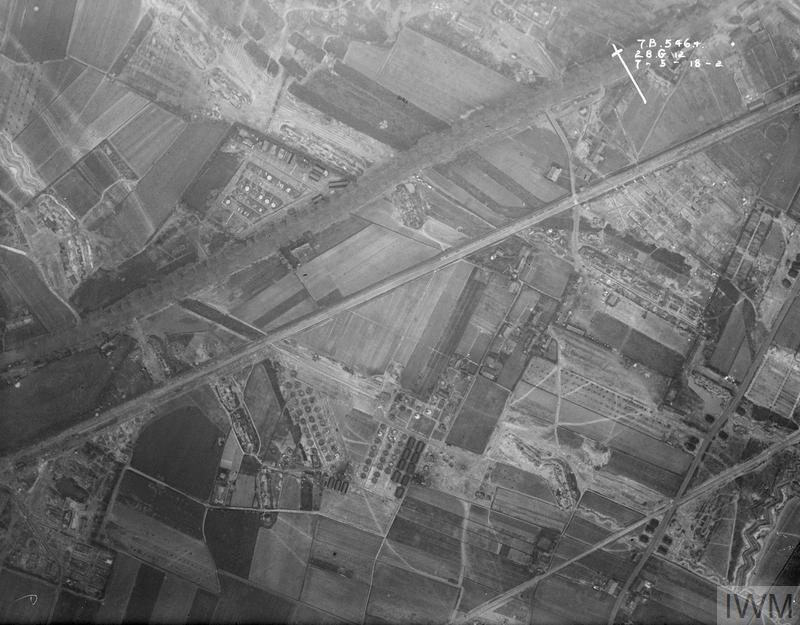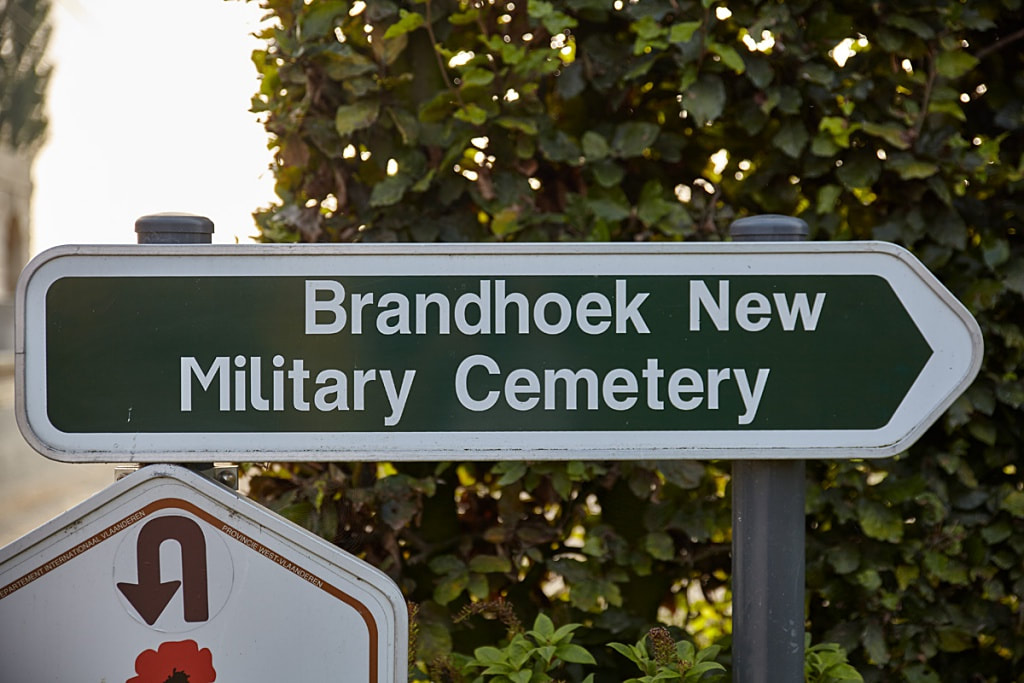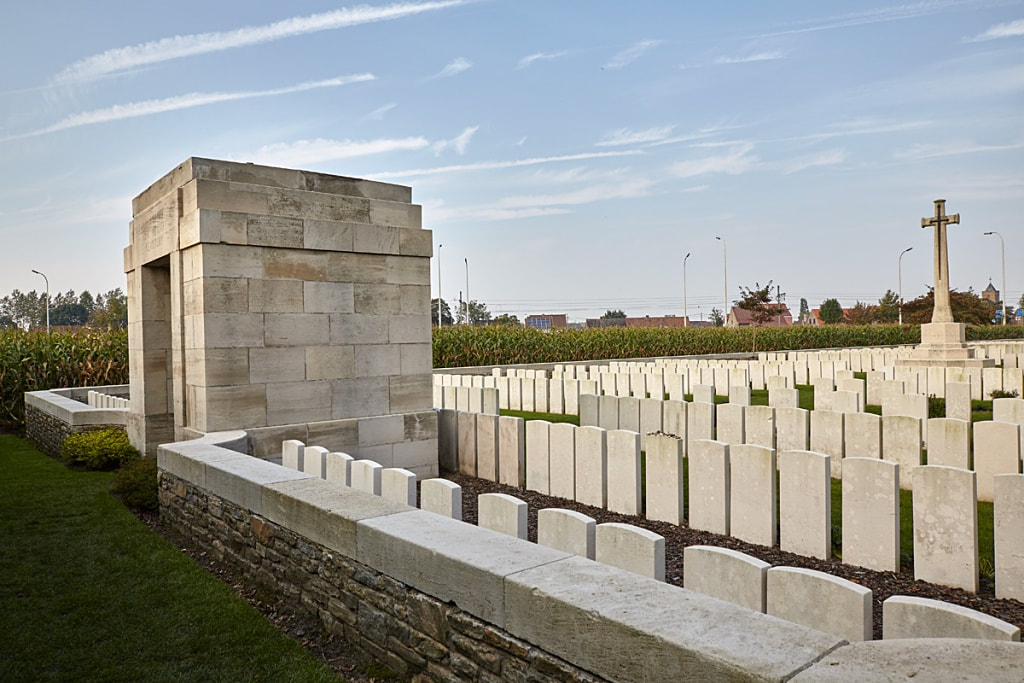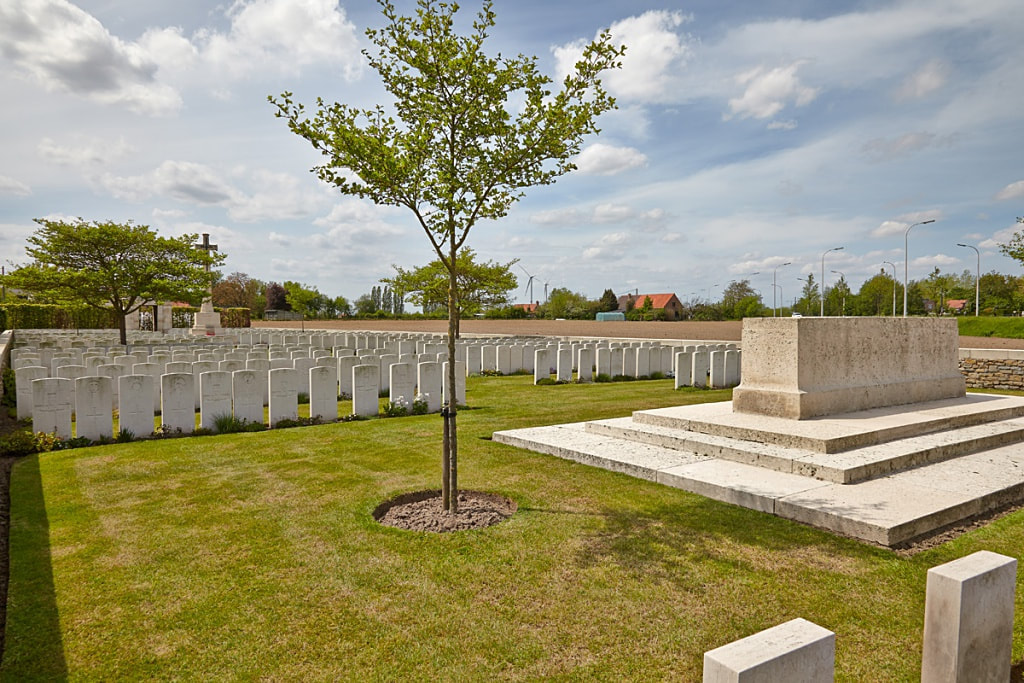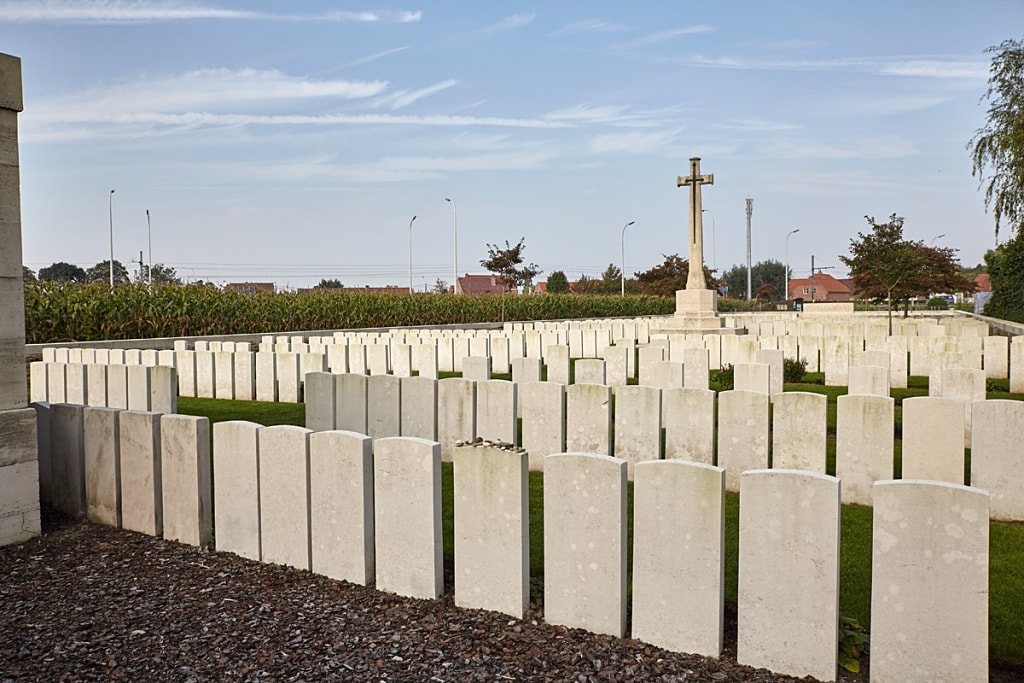BRANDHOEK NEW MILITARY CEMETERY
West-Vlaanderen
Belgium
GPS Coordinates Latitude: 50.85273 Longitude: 2.78781
Location Information
Brandhoek New Military Cemetery is located 6.5 km west of Ieper town centre, on the Zevekotestraat, a road leading from the N308 connecting Ieper to Poperinge. From Ieper town centre the Poperingseweg (N308), is reached via Elverdingestraat then directly over two small roundabouts in the Capronstraat. The Poperingseweg is a continuation of the Capronstraat and begins after a prominent railway level crossing. 6 km along the N308, after passing the village of Vlamertinge and just beyond the church in the hamlet of Brandhoek lies the left hand turning onto the Grote Branderstraat. After crossing the N38 Westhoekweg, the first right hand turning leads onto the Zevekotestraat.
The cemetery is located 300 metres along the Zevekotestraat on the right hand side of the road, beyond the N38 dual carriageway, which it is necessary to cross.
Visiting Information
Visitors should note a small grass access path which is not suitable for vehicles.
Historical Information
During the First World War, Brandhoek was within the area comparatively safe from shell fire, which extended beyond Vlamertinghe Church. Field ambulances were posted there continuously.
Until July 1917 burials had been made in the Military Cemetery, but the arrival of the 32nd, 3rd Australian and 44th Casualty Clearing Stations in preparation for the new Allied offensive launched that month made it necessary to open the New Military Cemetery, followed in August by the New Military Cemetery No 3.
Brandhoek New Military Cemetery contains 530 Commonwealth burials of the First World War and 28 German war graves. The burials are of July and August 1917 and among them is the grave of Captain Noel Chavasse, VC and Bar, MC, one of only three men who have won the Victoria Cross twice.
The cemetery was designed by Sir Reginald Blomfield and Noel Ackroyd Rew
Total Burials: 558.
Identified Casualties: United Kingdom 512, Germany 28, Australia 11, Canada 6, India 1. Total 558.
Brandhoek New Military Cemetery is located 6.5 km west of Ieper town centre, on the Zevekotestraat, a road leading from the N308 connecting Ieper to Poperinge. From Ieper town centre the Poperingseweg (N308), is reached via Elverdingestraat then directly over two small roundabouts in the Capronstraat. The Poperingseweg is a continuation of the Capronstraat and begins after a prominent railway level crossing. 6 km along the N308, after passing the village of Vlamertinge and just beyond the church in the hamlet of Brandhoek lies the left hand turning onto the Grote Branderstraat. After crossing the N38 Westhoekweg, the first right hand turning leads onto the Zevekotestraat.
The cemetery is located 300 metres along the Zevekotestraat on the right hand side of the road, beyond the N38 dual carriageway, which it is necessary to cross.
Visiting Information
Visitors should note a small grass access path which is not suitable for vehicles.
Historical Information
During the First World War, Brandhoek was within the area comparatively safe from shell fire, which extended beyond Vlamertinghe Church. Field ambulances were posted there continuously.
Until July 1917 burials had been made in the Military Cemetery, but the arrival of the 32nd, 3rd Australian and 44th Casualty Clearing Stations in preparation for the new Allied offensive launched that month made it necessary to open the New Military Cemetery, followed in August by the New Military Cemetery No 3.
Brandhoek New Military Cemetery contains 530 Commonwealth burials of the First World War and 28 German war graves. The burials are of July and August 1917 and among them is the grave of Captain Noel Chavasse, VC and Bar, MC, one of only three men who have won the Victoria Cross twice.
The cemetery was designed by Sir Reginald Blomfield and Noel Ackroyd Rew
Total Burials: 558.
Identified Casualties: United Kingdom 512, Germany 28, Australia 11, Canada 6, India 1. Total 558.
Captain Noel Godfrey Chavasse, V. C. and Bar, M. C., Mentioned in Despatches
Royal Army Medical Corps, attached 1st/10th Battalion The King’s (Liverpool Regiment),
4th August 1917, aged 32.
Plot III. B. 15.
He is one of only three men to have won the Victoria Cross twice.
Son of The Right Rev. The Lord Bishop of Liverpool, of The Palace, 19, Abercromby Square, Liverpool.
His brother, Aidan also fell and is commemorated on the Menin Gate Memorial.
His headstone bears the inscription; "Greater Love Hath No Man Than This That A Man Lay Down His Life For His Friends"
Citation
Extracts from “ The London Gazette “ dated 26th Oct. 1916 and 14th Sept. 1917 respectively, record the following. “ For most conspicuous bravery and devotion to duty. During an attack he tended the wounded in the open all day, under heavy fire, frequently in view of the enemy. During the ensuing night he searched for wounded on the ground in front of the enemy’s lines for four hours. Next day he took one stretcher-bearer to the advanced trenches, and under heavy shell fire carried an urgent case for 500 yards into safety, being wounded in the side by a shell splinter during the journey. The same night he took a party of twenty volunteers, rescued three wounded men from a shell hole twenty-five yards from the enemy’s trench, buried the bodies of two officers, and collected many identity discs, although fired on by bombs and machine guns. Altogether he saved the lives of some twenty badly wounded men, besides the ordinary cases which passed trough his hands. His courage and self-sacrifice were beyond praise”.
Citation
“For most conspicuous bravery and devotion to duty, when in action. Though severely wounded early in the action whilst carrying a wounded soldier to the Dressing Station, Capt. Chavasse refused to leave his post, and for two days not only continued to perform his duties, but in addition went out repeatedly under heavy fire to search for an attend to the wounded who were lying out. During these searches, although practically without food during this period, worn with fatigue and faint with his wound, he assisted to carry in a number of badly wounded men, over heavy and difficult ground. By his extraordinary energy and inspiring example, he was instrumental in rescuing many wounded who would have otherwise undoubtedly succumbed under the bad weather conditions. This devoted and gallant officer, subsequently died of his wounds.”
Images in this gallery © Werner Van Caneghem

36135 Private
Richard Broughton
8th Bn. The Loyal North Lancashire Regiment
2nd August 1917, aged 31.
Plot II. G. 3.
Son of Nancy and the late Richard Broughton, of 15 Trout Street, Burnley, Lancs.
Prior to enlisting he worked for Mr. Harling, Furniture Dealer, Plumbe Street, Burnley.
His headstone bears the inscription; "The Last Reveille."
Richard Broughton
8th Bn. The Loyal North Lancashire Regiment
2nd August 1917, aged 31.
Plot II. G. 3.
Son of Nancy and the late Richard Broughton, of 15 Trout Street, Burnley, Lancs.
Prior to enlisting he worked for Mr. Harling, Furniture Dealer, Plumbe Street, Burnley.
His headstone bears the inscription; "The Last Reveille."

10356 Driver
Herbert Edwin Stear
2nd Bde. Australian Field Artillery
7th August 1917, aged 33.
Plot III. D. 6.
Son of William and Catherine Stear, of 58, Little Breen St., Bendigo, Victoria, Australia. Native of Lake Charm, Victoria.
His headstone bears the inscription; "In Memory Of The Dearly Loved Son Of Mrs. C. Stear Of Bendigo."
Herbert Edwin Stear
2nd Bde. Australian Field Artillery
7th August 1917, aged 33.
Plot III. D. 6.
Son of William and Catherine Stear, of 58, Little Breen St., Bendigo, Victoria, Australia. Native of Lake Charm, Victoria.
His headstone bears the inscription; "In Memory Of The Dearly Loved Son Of Mrs. C. Stear Of Bendigo."




